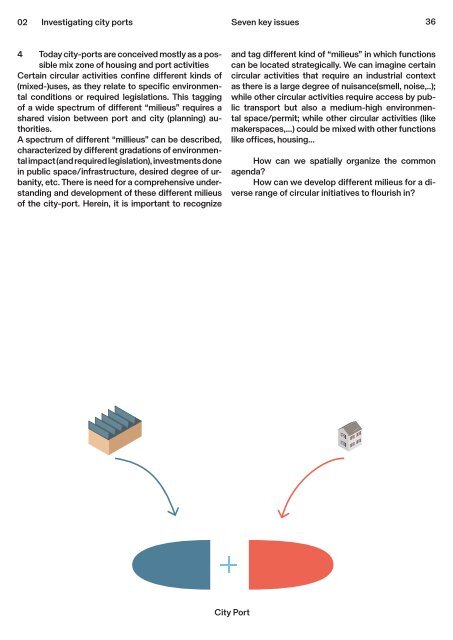Circular City Ports - Workbook
Create successful ePaper yourself
Turn your PDF publications into a flip-book with our unique Google optimized e-Paper software.
02 Investigating city ports Seven key issues<br />
36<br />
4 Today city-ports are conceived mostly as a possible<br />
mix zone of housing and port activities<br />
Certain circular activities confine different kinds of<br />
(mixed-)uses, as they relate to specific environmental<br />
conditions or required legislations. This tagging<br />
of a wide spectrum of different “milieus” requires a<br />
shared vision between port and city (planning) authorities.<br />
A spectrum of different “millieus” can be described,<br />
characterized by different gradations of environmental<br />
impact (and required legislation), investments done<br />
in public space/infrastructure, desired degree of urbanity,<br />
etc. There is need for a comprehensive understanding<br />
and development of these different milieus<br />
of the city-port. Herein, it is important to recognize<br />
and tag different kind of “milieus” in which functions<br />
can be located strategically. We can imagine certain<br />
circular activities that require an industrial context<br />
as there is a large degree of nuisance(smell, noise,..);<br />
while other circular activities require access by public<br />
transport but also a medium-high environmental<br />
space/permit; while other circular activities (like<br />
makerspaces,...) could be mixed with other functions<br />
like offices, housing...<br />
How can we spatially organize the common<br />
agenda?<br />
How can we develop different milieus for a diverse<br />
range of circular initiatives to flourish in?<br />
<strong>City</strong> Port


















